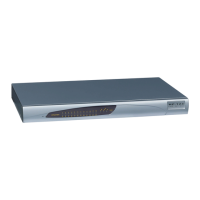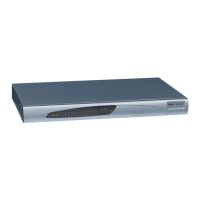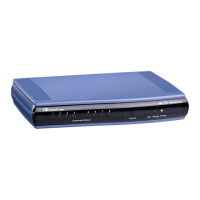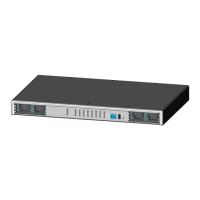Version 7.2 461 Mediant 1000B Gateway & E-SBC
User's Manual 21. Digital PSTN
21.6.3 Creating an NFAS-Related Trunk Configuration
The procedures for creating and deleting an NFAS group must be performed in the correct
order, as described below.
To create an NFAS Group:
1. If there’s a backup (‘secondary’) trunk for this group, it must be configured first.
2. Configure the primary trunk before configuring any NFAS (‘slave’) trunk.
3. Configure NFAS (‘slave’) trunks.
To stop / delete an NFAS Group:
1. Stop or delete (by setting ProtocolType to 0, i.e., 'None') all NFAS (‘slave’) trunks.
2. Stop or delete (by setting ProtocolType to 0, i.e., 'None') the backup trunk if a backup
trunk exists.
3. Stop or delete (by setting ProtocolType to 0, i.e., 'None') the primary trunk.
Note:
• All trunks in the group must be configured with the same values for trunk
parameters TerminationSide, ProtocolType, FramingMethod, and LineCode.
• After stopping or deleting the backup trunk, delete the group and then reconfigure
it.
21.6.4 Performing Manual D-Channel Switchover in NFAS Group
If an NFAS group is configured with two D-channels (Primary and Backup), you can do a
manual switchover between these D-channels.
To manually switchover from active to standby D-channel:
1. Open the NFAS Group & D-Channel Status page (Monitor menu > PSTN Status tab
> NFAS Group & D-Channel Status).
2. Select the required NFAS group, and then click the Switch Activity button.
Note:
• The Switch Activity button is unavailable (i.e, grayed out) if a switchover cannot
be done due to, for example, alarms or unsuitable states.
• This feature is applicable only to T1 ISDN protocols supporting NFAS, and only if
the NFAS group is configured with two D-channels.
21.7 ISDN Overlap Dialing
Overlap dialing is a dialing scheme used by several ISDN variants to send and/or receive
called number digits one after the other (or several at a time). This is in contrast to en-bloc
dialing in which a complete number is sent in one message.
The device supports the following ISDN overlap dialing methods:
Collects ISDN called party number digits and then sends the SIP INVITE to the IP side

